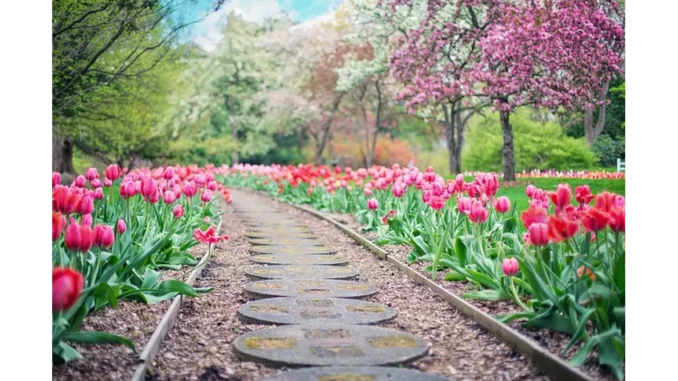
Transforming Your Garden into a Symphony of Colours: Expert Tips and Inspiration
Living with light: Create your dream orangery for year-round luxury from Elegancia.homes.
Designing a garden is not merely about planting flowers; it is an opportunity to unleash your creativity and craft a living masterpiece. The hues you select can elevate the beauty of your landscape and harmonise with the architecture of your home. By delving into the principles of colour theory, you can create an outdoor sanctuary that is both visually captivating and in perfect harmony with its surroundings.
The Colour Wheel: Your Guide to Garden Brilliance
At the heart of any successful garden design lies the colour wheel—a quintessential tool that demystifies the relationships between colours. This artistic compass comprises primary colours (red, blue, yellow), secondary colours (green, orange, purple), and tertiary colours, which are blends of primary and secondary hues. With the guidance of the colour wheel, you can curate colour schemes that will inform your floral choices and enhance your garden’s aesthetic allure.
Crafting Captivating Colour Schemes
-
Monochromatic Schemes: Monochromatic schemes are the epitome of elegance, focusing on various tints and shades of a single colour to create a seamless and tranquil atmosphere. Imagine a garden awash with gentle purples, from the soothing notes of lavender to the rich depths of violet. Flowers such as lavender, lilac, and purple coneflowers are perfect for achieving this serene and cohesive look.
-
Analogous Schemes: For a harmonious and aesthetically pleasing garden, consider analogous schemes, which employ colours adjacent to each other on the colour wheel. Envision a garden alive with the refreshing combination of yellows, yellow-greens, and greens. Sunflowers, daffodils, and green zinnias are delightful choices that bring this lively palette to life.
-
Complementary Schemes: To infuse your garden with vibrancy and energy, explore complementary colour schemes, where colours opposite each other on the colour wheel, such as red and green or blue and orange, collide in a dazzling display. Pair red roses with lush green foliage or combine orange marigolds with blue hydrangeas for a garden that truly stands out.
-
Triadic Schemes: A triadic scheme offers a balanced and dynamic aesthetic, using three evenly spaced colours on the colour wheel. Imagine the striking combination of red, yellow, and blue blooms. To achieve this, consider planting red poppies, yellow daisies, and blue delphiniums, creating a garden as vibrant as it is balanced.
Harmonising Your Garden with Your Home
The colours of your home play a pivotal role in the selection of your garden’s floral palette. Neutral-toned homes, such as those in beige or grey, provide a versatile canvas for any flower colour. Conversely, homes adorned with vivid hues require a more discerning approach to avoid clashing tones.
For homes in cooler shades like blue or grey, opt for flowers in cool tones such as blues, purples, and whites to maintain a cohesive aesthetic. Warm-toned homes, painted in reds or yellows, can be beautifully complemented with flowers in oranges, reds, and yellows.
The Impact of Mulch and Foliage
Do not underestimate the transformative power of mulch and foliage in your garden’s colour scheme. Dark mulch can create a dramatic contrast with bright flowers, while lighter mulch offers a more delicate look. Furthermore, foliage with unique hues, such as silver or burgundy, can add layers of depth and intrigue to your floral arrangements.
Designing a Year-Round Colour Palette
Consider the seasonal evolution of your garden’s colour palette. Spring may usher in a wave of pastels, while summer bursts forth with vibrant colours. In autumn, turn to flowers with warm, earthy tones to mirror the changing leaves. By thoughtfully planning for seasonal transitions, your garden will remain a perennial spectacle of beauty.
In conclusion, selecting the colours of your garden is a delightful endeavour that marries creativity with thoughtful design. With a firm grasp of colour theory and a keen eye on how hues interact with both each other and your home, you can craft a garden that is a testament to your unique style and personality. So, embrace the endless possibilities and let your garden blossom into a reflection of your artistic vision.


Be the first to comment